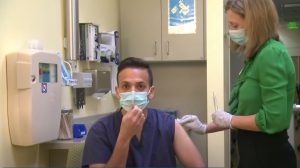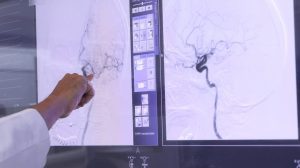NEW YORK (Reuters Health) – A technique called targeted muscle innervation is a feasible means of controlling complex prosthetic movements in arm amputees, according to a report in the Journal of the American Medical Association for February 11th.
With targeted muscle reinnervation (TMR), nerves that normally enervate muscles in the hand and arm are surgically rerouted to connect with muscles in the chest. Electrodes placed on the chest muscles can then detect contractions and send motor signals to the prosthetic arm. Thus, when an amputee simply thinks about moving their hand or arm, they will.
In the new study, Dr. Todd A. Kuiken, from the Rehabilitation Institute of Chicago, and colleagues compared the arm function of five TMR-treated amputees with that of five non-amputation controls. During the study, the subjects were asked to perform several arm movements and the time necessary to perform each movement were recorded.
On average, the elbow and wrist motion selection time (time to correctly select a target motion) for TMR patients was 0.22 seconds, not much longer than the 0.16 seconds seen in controls.
The mean elbow and wrist movement completion rate was also similar: 96.3% for the TMR group vs. 100% for the controls. The average times for this task were 1.29 and 1.08 seconds for TMR patients and controls, respectively.
Hand grasps took longer than arm movements in both subject groups, the report indicates. For TMR patients, the average hand grasp complication time was 1.54 seconds, 0.28 seconds longer than the time in the control group.
Three TMR patients showed the feasibility of the system in controlling complex prostheses featuring motorized hands, wrists, elbows, and shoulders, the investigators note.
While the findings are encouraging, the authors note that “additional research and development need to be conducted before field trials can be performed.”
In a related editorial, Dr. Gerald E. Loeb, from the University of Southern California, Los Angeles, comments that the researchers “have reported on an exciting and promising work in progress, with many opportunities available to improve both the technology and the clinical implementation. Such revolutions develop slowly at best, but their effects tend to be profound.”
Reference:
JAMA 2009;301:619-628,670-671.




